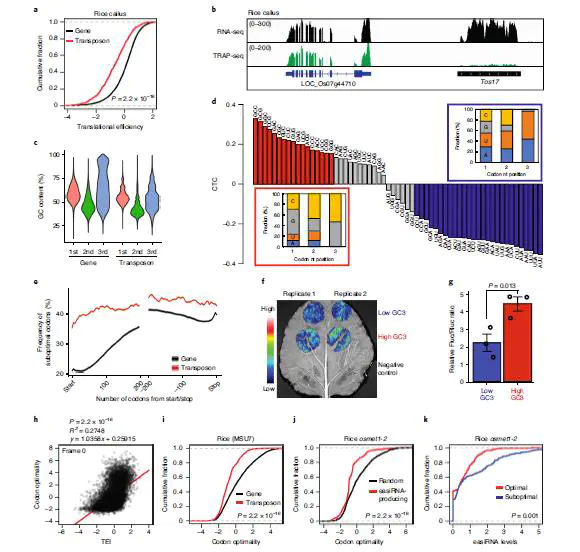 Image credit: [Eunyu Kim]
Image credit: [Eunyu Kim]Abstract
Transposable elements (TEs, transposons) are mobile DNAs that can cause fatal mutations. To suppress their activity, host genomes deploy small interfering RNAs (siRNAs) that trigger and maintain their epigenetic silencing. Whereas 24-nucleotide (nt) siRNAs mediate RNA-directed DNA methylation (RdDM) to reinforce the silent state of TEs, activated or naive TEs give rise to 21- or 22-nt siRNAs by the RNA-DEPENDENT RNA POLYMERASE 6 (RDR6)-mediated pathway, triggering both RNAi and de novo DNA methylation. This process, which is called RDR6–RdDM, is critical for the initiation of epigenetic silencing of active TEs; however, their specific recognition and the selective processing of siRNAs remain elusive. Here, we suggest that plant transposon RNAs undergo frequent ribosome stalling caused by their unfavourable codon usage. Ribosome stalling subsequently induces RNA truncation and localization to cytoplasmic siRNA bodies, both of which are essential prerequisites for RDR6 targeting. In addition, SUPPRESSOR OF GENE SILENCING 3 (SGS3), the RDR6-interacting protein, exhibits phase separation both in vitro and in vivo through its prion-like domains, implicating the role of liquid–liquid phase separation in siRNA body formation. Our study provides insight into the host recognition of active TEs, which is important for the maintenance of genome integrity.